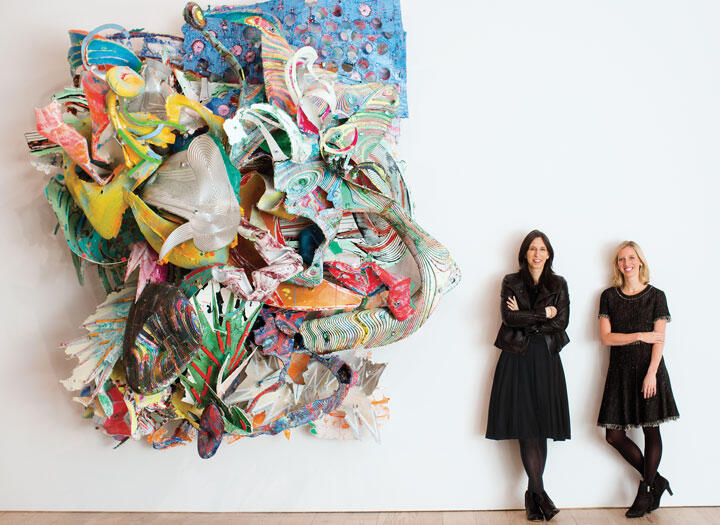Profile: Emily Arensman ’06 and Megan Heuer *08: ‘From novices to experts’
Alumnae design public programs to draw all audiences to Frank Stella ’58’s art at the Whitney
When a retrospective on the work of Frank Stella ’58 opened this fall at the Whitney Museum’s new building in downtown Manhattan, Megan Heuer *08 and Emily Arensman ’06 were plotting ways to draw a diverse audience to see it.
Heuer, the director of public programs and engagement for the Whitney, and Arensman, who works with her as the programs’ manager, create events that engage visitors and introduce them to Stella’s work and the other art on display. The museum wants “to remove barriers to access,” Arensman says. The move last spring to the new location is an opportunity to bring in audiences who may never have ventured to the Upper East Side to visit the old Whitney but live near the new building, such as residents of housing projects in nearby Chelsea and members of an LGBT center a few blocks away.
Stella burst onto the abstract art scene a couple of years after graduating from Princeton. The exhibit, which runs through Feb. 7, is the most comprehensive presentation of his work to date. It includes 120 paintings, sculptures, drawings, and other types of work, including both well-known and rarely seen pieces.
To draw in new audiences, the museum holds free events for senior citizens, many of whom are low-income, on a day when the museum is closed. “It’s a day to themselves,” Arensman says. “Many live nearby and feel now as if the museum belongs to them.” There also are special events for families and schoolchildren, hands-on art-making programs, and lectures by contemporary artists. Programs that focus on the artist’s process also help bring in those who are less comfortable with art. Says Heuer: “We want all kinds of audiences — from novices to experts — to feel welcome here.”













No responses yet